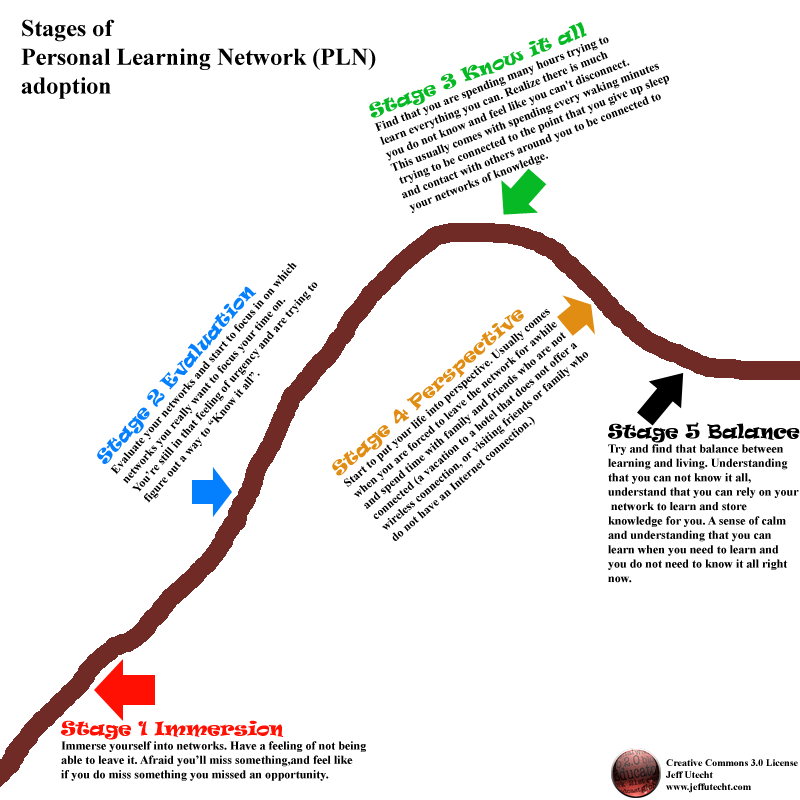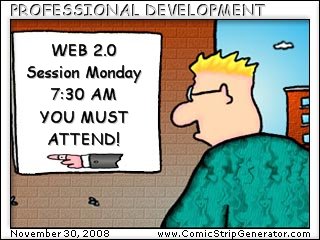PLEASE NOTE: For a much expanded and updated version of this information, please go to Becoming and Being: Reflections on Teacher-Librarianship, pages 192-205.
On September 22, 2010, eighteen-year-old Tyler Clementi, a freshman at Rutgers University, jumped to his death from the George Washington Bridge. His private encounter with a man in his dorm room had been secretly recorded and broadcast over the Internet by Clementi’s roommate, who boasted about this on his Facebook page.
Tyler’s death inspired an outpouring of shock and grief around the world, and led to the adoption of anti-bullying and safe environment legislation in two American states (Associated Press, 2010). For many people saddened by this tragedy the spotlight shone on the homophobic bullying and harassment that cause so many youths to live in fear. Most high school teachers know that homophobia is rampant among teenagers. We teacher-librarians pride ourselves on the fact that our libraries are safe havens that meet the needs of all our students, but would our GLBTQ students agree? If you aren’t sure, the professional and research literature provides many resources to help teacher-librarians make changes. We can better understand the challenges GLBTQ youth face every day at school, and learn about ways to improve our collections, our services, and our support for GLBTQ youth. These resources can help us answer this question: How can a high school teacher-librarian ensure that the library is a student-centred safe haven that meets the needs of GLBTQ students?
Understand the Challenges GLBTQ Youth Face at School and in the Library
First we need to see the reality of GLBTQ teen life. Fear is a constant for many GLBTQ high school students. A recent Canadian study (Taylor et al., 2010) commissioned by Egale Canada Human Rights Trust surveyed 1700 high school students and reported that 75% of GLBTQ students (87% of transgender students) felt unsafe in various areas at school (p. 3), even, for some, the school library (p. 24). Over 25% of GLBTQ students had skipped school because they felt unsafe (p. 5). Over 75% heard derogatory (homophobic) comments every day, and 60% (90% of transgender students) said they had been verbally harassed about their sexual orientation (p. 3). Many students (40 % of transgender; 25% of GLBTQ) had been physically harassed (p. 4). Where were the adults while all this was happening? Sadly, 50% of transgender students (34.1% of GLBQ) reported that staff never intervened when homophobic comments were made (p. 4), and 40% did not feel that they could talk to a teacher (Taylor et al., 2010, p. 5). One participant said, “The teachers know it’s going on, but they rarely pipe up and protect me or others. i guess they figure it’s a lost cause. it takes a lot of energy to defend yourself all the time” (Taylor et al., 2010, p. 34). Other research suggests that these numbers may be conservative. A British Columbia survey of 18 high schools found that GLBTQ students were harassed 80% more than their heterosexual peers (Darwich, 2008, as cited in Haskell and Burtch, 2010). The 2009 Gay, Lesbian and Straight Education Network survey of 7200 students across the United States reported higher percentages of GLBTQ students suffering various types of harassment: 85% were verbally harassed, 40% were physically harassed, and 52% were victims of cyber-bullying. It is shocking to note that 62% of students who were harassed did not report it to authorities, assuming that nothing would be done, or that the harassment would worsen, and 33% of students who did report harassment said that no action had been taken by their school (Kosciw, Greytak, Diaz, & Bartkiewicz, 2010, p. 3). To what does all this fear lead? According to a study by the organization Advocates for Youth, one-third of gay/lesbian youth say they have attempted suicide at least once, about 30% have dropped out of school, and as many as 40% of homeless youth are gay (Advocates for Youth, 2002, as cited in Curry, 2005, p. 68). Surely school libraries, at least, are safe and welcoming? In addition to looking at overall school experiences, the professional and research literature abounds with accounts of GLBTQ youths’ experiences in the library. A fifteen year-old blogger recalls,
When I set out to find more LGBT titles, I turned to my school’s library. Honestly? It was pathetic. There was not one single LGBT novel. But oh, of course the librarian went out of her way to buy books about gangs, drugs, and teen pregnancy. When I asked her about that, she replied, “This is a school library. If you’re looking to read inappropriate titles, go to a bookstore.” Uhm, how in the hell is LGBT YA lit “inappropriate”? (Limited Shelf Life, 2010)
Students struggling to find GLBTQ resources in libraries report a number of common issues. These include not being able to find resources, not feeling safe to approach library staff for help, and feeling negatively judged by others (including staff) in libraries (Bridge, 2010; Curry, 2005; Hoheb, 1999; Linville, 2004). In addition, school Internet filters often block GLBTQ sites appropriate for teen use, including them with pornography and obscenity as banned sites (Greenblatt, 2003; Hobeb, 1999; Martin & Murdock, 2007; Schrader & Wells, 2007; Whelan, 2006). Given these findings, it is perhaps not surprising that when asked what school staff members they would approach for help with GLBTQ issues, students ranked only the principal and vice-principal less approachable than the school librarian (Kosciw, Greytak, Diaz, & Bartkiewicz, 2010, p. 60). Learn What Information LGBTQ Teens Need A second strategy to help teacher-librarians improve programming is to examine what GLBTQ students need to know. Rauch (2010) states, “An important part of adolescence is the self-searching and identity-forming transition, when teens need to figure out who they are among their friends, family, and society as a whole” (p. 216). Unfortunately GLBTQ youth are often at a disadvantage during this crucial time as they generally do not have GLBTQ role models in their circle of family and friends, and may even be rejected by them (Behara & Maquet, 2006, p. 13). Alexander and Miselis (2007) point out that “Most GLBTQ teens have limited access to information, few positive role models, and tenuous social support systems, making identity formation extremely difficult” (p. 45). So what information is most useful to GLBTQ youth at this critical time in their lives? Behra and Maquet (2006) interviewed 21 GLBTQ individuals in depth to determine their information needs during the coming out process. Using the participants’ experiences, as well as the findings of related research literature, Behra and Maquet first defined the coming out process as a series of phases. They identified the concerns experienced in each phase, the information youth needed, and then developed useful, practical interventions that librarians can use to support GLBTQ youth at each phase.
These teens needed information about issues such as how to behave around other GLBTQ people, information about where to find GLBTQ individuals and social groups, examples of positive GLBTQ role models, and reliable information sources about GLBTQ issues to share with family and friends (Behara & Maquet, 2006, p. 9).
Linville (2004), a young adult librarian, also surveyed GLBTQ teens to find out what they wanted from the library. The most popular choice was stories about real people, but teens also wanted coming out stories, information on community resources, equal rights for GLBTQ youth, and safe sex; novels, and books about what it means to be gay (p. 184). Linville says, “They [also] want to know that we know that gay people live in every neighborhood, not just in that gay neighborhood over there. And they want to know that we welcome queer people to the library” (p.186). Build a GLBTQ Collection Once teacher-librarians are familiar with students’ information needs, they can use this knowledge to develop their collections. Building a GLBTQ collection is of course very similar to building any collection. Schrader and Wells offer this advice. “Above all, build slowly, seek resources, find kindred spirits, form networks, strategize thoughtfully and know that you are not alone” ( 2007, p. 25). Of course, there are issues specific to the collection. Locating resources Alexander & Miselis (2007) point out that the number of GLBTQ young adult resources available far exceeds actual library holdings (p. 43). Unfortunately resources can be difficult to find as GLBTQ books represent only 1% of the market (Clyde and Lobban, 2001 as cited in Cook, 2004, p. 43). Many books are not available from the usual wholesalers or jobbers as they are printed by small presses (Bridge, 2010; Cook, 2004; Gardner, 2006). Happily the professional and research literature (see Gardner, 2006; Martin & Murdock, 2007; Rauch, 2010; Rockefeller, 2009; Schrader & Wells, 2007; and Whelan, 2006) provides many suggestions for finding new titles. Teacher-librarians can use the Young Adult Library Services Association and American Library Association web sites, the Lambda Awards and Stonewall Awards (GLBTQ themes), online bookstores, and online databases such as NoveList to find titles. In addition, teacher-librarians can survey students, talk to their peers, and consult staff of local specialty book stores. They can also network with Gay Straight Alliance facilitators, as well as with PFLAG (Parents, Families and Friends of Lesbians and Gays), and other GLBTQ groups Working with local and community groups has added benefits. As Rauch points out, “If librarians invite GLBTQ groups into the library and encourage the involvement of the entire community, fear and hatred that exists for non-heterosexuals can be overcome” (2010, p. 218). In addition to resources already suggested, professional readers’ advisory and selection guides for GLBTQ literature are available to assist teacher-librarians in selecting resources appropriate to their libraries. The Schrader and Wells (2007) guide already mentioned includes an extensive annotated bibliography, as does Serving Lesbian, Gay, Bisexual, Transgender, And Questioning Teens: A How-To-Do-It Manual for Librarians (Martin and Murdock, 2007). In addition, The Heart Has Its Reasons: Young Adult Literature with Gay/Lesbian/Queer Content, 1969-2004 (Cart and Jenkins, 2006) provides a historical overview of the literature as well as extensive annotated lists. Bosman and Bradford’s Gay, lesbian, bisexual, and transgendered literature: A genre guide (2008) provides a broader look at the literature by investigating its various genres, providing annotations (and readers’ advisories) for 1100 titles. Understanding issues with reviews. Traditionally most teacher-librarians have relied on reviews in professional journals to guide their selection choices, but locating reviews of GLBTQ resources can be problematic. Boon and Howard (2004) reported that titles with GLBTQ content received 41% fewer reviews than a control group of non-GLBTQ young adult fiction titles (p. 135). Rockefeller (2009) points out that the major reviewing journals may not review books from small, independent presses (p. 289). Rothbauer and McKechnie (2000) discovered what might be considered biased reviews of GLBTQ literature. In the reviews they read, “If a book was judged to provide some good life lessons it was always evaluated favourably despite any other perceived failings” (p. 13). Clarifying Cataloguing. Another issue in building a GLBTQ collection is cataloguing. Because subject headings do not keep up with current culture, teacher-librarians are advised to catalogue and cross-reference these resources in user-friendly terms so as to be easily found by students. While GLBTQ terms are constantly evolving, teens are more likely to use “gay” or “queer” than they are “homosexual” when searching the catalogue, so cataloguers should use current terminology (Bosman & Bradford, 2008; Cook, 2004; Johnson, 2010; McClary & Howard, 2007; Moss, 2008; Rothbauer, 2004; Rockefeller, 2009). Dealing with challenges. While dealing with challenges to collections is never pleasant, the best way to face one is to be prepared for it. Schrader and Wells (2007) and Martin and Murdock (2007) suggest that teacher-librarians start by developing clear guidelines for selecting library materials, including input from teachers, parents, students, administrators, and other staff. Martin and Murdock provide ideas for a red light, green light, yellow light, school zone strategy that allows librarians to ease their libraries gently and appropriately into using and promoting GLBTQ literature (2007, p. 125-135). A number of researchers suggest that teacher-librarians should prepare a collection development policy that defines their practice, as well as a challenge procedure that details each step in the process, and ensure all staff (including senior administration) are familiar with these (Rockefeller, 2009; Martin & Murdock, 2007; Schrader & Wells, 2007; Whelan, 2006). In their survey of librarians in 29 states, Alexander and Miselis found that “challenges to GLBTQ materials are unsuccessful when the library is prepared with a strong policy, good reviews to support the materials, and the support of knowledgeable administrators” (2007, p. 47). There is no question that developing a GLBTQ collection requires a great deal from a teacher-librarian. Brian Kenny, School Library Journal Editor-in-Chief, says, “It takes guts to create libraries that support the needs of all our students. It takes even more guts to support collections that may attract fierce opposition. But that just happens to be our job” (2006, p.11). Provide Library Services Appropriate for LGBTQ Teens Just what kind of library services do GLBTQ teens need? David Levithan, author of young adult gay fiction, editor, and a gay man himself, writes an impassioned article about the importance of supporting GLBTQ literature in libraries. In this excerpt he describes how librarians make a daily difference in teens’ lives.
I have met so many amazing librarians in the past few years, staunch and strong defenders of expression and representation. I can say without a single doubt that many young readers’ lives have been helped and saved by their librarians’ open-mindedness and courage. (I have the e-mails to prove it.) Many people consider librarians to be gatekeepers, usually in terms of keeping things out. I also think of librarians as gatekeepers in terms of the people they help through the gates. . . the amazing number of librarians who support and encourage their openly gay, lesbian, bisexual, transgender, and questioning students as they strive to live their lives the way they want to live them (2004, p. 45).
What services and support are most helpful? Two resources that provide exceptionally detailed descriptions of programs and services are Serving Lesbian, Gay, Bisexual, Transgender, and Questioning Teens: A How-To-Do-It Manual for Librarians (Martin & Murdock, 2007), and the Canadian resource, Challenging Silence, Challenging Censorship: Inclusive Resources, Strategies and Policy Directives for Addressing Bisexual, Gay, Lesbian, Trans-Identified and Two-Spirited Realities in School and Public Libraries (Schrader & Wells, 2007). Strategies suggested here and by other professional and research articles (see Gardes, 2008; Mehra & Braquet, 2006; and Whelan, 2006) include
- Celebrating Gay Pride Week, Gay History Month, and GLSEN’s Day of Silence, an annual vow of silence to bring attention to harassment in schools;
- Providing high-quality fiction materials that let GLBTQ students see themselves positively;
- Putting bibliographies of GLBTQ literature on the library web site, and adding some of these titles to summer reading lists;
- Helping create and support Gay-Straight Alliances and other student clubs that address GLBTQ issues; host them in the library;
- Making GLBTQ materials accessible and visible; including them in booktalks, displays, and pathfinders;
- Encouraging access to appropriate GLBTQ web sites and where possible eliminating Internet filters;
- Posting Safe Place or similar notices to let everyone know the school library is a GLBTQ-friendly place and that all students will be treated respectfully;
- Actively discouraging homophobic talk and providing services in a non-judgmental manner to youth seeking “queer” information;
- Protecting the privacy and dignity of GLBTQ patrons;
- Treating GLBTQ students as you would any other student;
- Including GLBTQ materials in regular programming, remembering that straight students can enjoy this quality literature too;
- Asking GLBTQ students what they like to read.
Committing to the Safe Haven Alvin Schrader (2007, p. 5) asks librarians, “ Do we as a public service profession – and as a society – believe that all young people should be safe and deserve dignity and respect at the library and at school?” Of course all educators will answer yes. But do we all ensure this respect for our GLBTQ students? Bridge observes,
The literature has proved that some librarians are very aware of the inequality of service provided to this user group and have been writing about the issue for more than thirty years. That the same issues are still being raised despite radical changes to equality laws in society confirms that LGBT teenagers remain an invisible minority (2010, p. 20).
For many people the death of Tyler Clementi made homophobia visible. When we understand the needs and experiences of our students, when we build diverse, rich, inclusive and accessible collections, when we provide services that reflect and support our students’ dignity and value, when we reclaim the safety of our spaces, then we truly do offer our GLBTQ students the safe havens they students need. We show them they are no longer invisible.
References
Alexander, L. B., & Miselis, S. D. (2007). Barriers to GLBTQ collection development and strategies for overcoming them. Young Adult Library Services, 5(3), 43-49. Retrieved from http://www.ala.org/ala/mgrps/divs/yalsa/yalsapubs/yals/youngadultlibrary.cfm Associated Press. (2010, December 6). Bergen Youth Orchestra to honor former member Tyler Clementi. NJ.com. Retrieved from http://www.nj.com/news/index.ssf/2010/12/bergen_youth_orchestra_to_hono.html Boon, M, H., & Howard V. (2004). Recent lesbian/gay/bisexual/transgender fiction for teens: Are Canadian public libraries providing adequate collections? Collection Building (23)3: 133-8. . Retrieved from http://www.emeraldinsight.com/products/journals/journals.htm?id=cb Bosman, E., Bradford, J. P. (2008). Gay, lesbian, bisexual, and transgendered literature: A genre guide (R. B. Ridinger, Ed.). Westport, CT: Libraries Unlimited. Bridge, S. (2010). No place on the shelves? Are Northern Ireland’s school libraries addressing the information needs of their lesbian, gay, bisexual and transgendered students? (Master’s thesis, Aberystwyth University, Ceredigion, United Kingdom). Retrieved from http://hdl.handle.net/2160/5714 Cook, J. C. (2004). GLBTQ teen literature: Is it out there in Indiana? Indiana Libraries, 23(2), 25-28. Retrieved from https://scholarworks.iupui.edu/handle/1805/112 Cart, M., & Jenkins, C. (2006). The heart has its reasons: Young adult literature with gay/lesbian/queer content, 1969-2004. Lanham, MD: Scarecrow Press. Curry, A. (2005). If I ask, will they answer? Reference & User Services Quarterly, 45(1), 65-75. Retrieved from http://www.rusq.org/ Gardes, T. (2008). Serving lesbian, gay, bisexual, transgendered, and questioning teens in your library media center. CSLA Journal, 32(1), 23-24. Retrieved from http://www.csla.net/pub/journal.htm Gardner, C. A. (2006). Welcoming our GLBT patrons. Virginia Libraries, 52(2), 45-50. Retrieved from http://scholar.lib.vt.edu/ejournals/VALib/ Greenblatt, E. (2003). Lesbian, gay, bisexual, transgender library users: Overcoming the myths. Colorado Libraries, 29, 21-25. Haskell, R., & Burtch, B. E. (2010). Get that freak: Homophobia and transphobia in high schools. Winnipeg, Canada: Fernwood. Hoheb, M. L. (1999). Missing mirrors: Literacy experiences of adolescent lesbians. (Doctoral dissertation). Retrieved from Dissertations & Theses: Full Text. (AAT 9952918) Johnson, M. (2010). Transgender subject access: History and current practice. Cataloging & Classification Quarterly, 48(8), 661-683. doi:10.1080/01639370903534398 Kenney, B. (2006). Do the right thing. School Library Journal, 52(1), 11. Retrieved from http://www.schoollibraryjournal.com Kosciw, J. G., Greytak, E. A., Diaz, E. M., & Bartkiewicz, M. J. (2010). The 2009 national school climate survey. Retrieved from Gay, Lesbian and Straight Education Network website: http://www.glsen.org/binary-data/GLSEN_ATTACHMENTS/file/000/001/1675-5.PDF Levithan, D. (2004). Supporting gay teen literature. School Library Journal, 50(10), 44-45. Retrieved from http://www.schoollibraryjournal.com Limited shelf life. (2010). School Library Journal, 56(7), 15-15. Retrieved from http://www.schoollibraryjournal.com Linville, D. (2004). Beyond picket fences: What gay/queer/LGBTQ teens want from the library. Voice of Youth Advocates, 27(3), 183-186. Retrieved from http://www.voya.com/ Martin, H. J., & Murdock, J. R. (2007). Serving lesbian, gay, bisexual, transgender, and questioning teens: A how-to-do-it manual for librarians. New York, NY: Neal-Schuman. McClary, C., & Howard, V. (2007). From “homosexuality” to “transvestites”: An analysis of subject headings assigned to works of GLBT fiction in Canadian public libraries. Canadian Journal of Information & Library Sciences, 31(2), 149-162. Retrieved from http://www.utpjournals.com/cjils/cjils.html Mehra, B., & Braquet, D. (2006). A “queer” manifesto of interventions for libraries to “come out” of the closet! A study of “queer” youth experiences during the coming out process. LIBRES: Library & Information Science Research Electronic Journal, 16(1), 1-29. Retrieved from http://libres.curtin.edu.au/ Moss, E. (2008). An inductive evaluation of a public library GLBT collection. Collection Building, 27(4), 149-156. doi:10.1108/01604950810913715 Rauch, E. W. (2010). GLBTQ collections are for every library serving teens! Voice of Youth Advocates, 33(3), 216-218. Retrieved from http://www.voya.com Rockefeller, E. I. (2009). Selection, inclusion, evaluation and defense of transgender-inclusive fiction for young adults: A resource guide. Journal of LGBT Youth, 6(2), 288-309. doi:10.1080/19361650902962641 Rothbauer, P. (2004). The internet in the reading accounts of lesbian and queer young women: Failed searches and unsanctioned reading. Canadian Journal of Information & Library Sciences, 28(4), 89-110. Retrieved from http://www.utpjournals.com/cjils/cjils.html Rothbauer, P. M., & Lynne E.F. McKechnie. (2000). The treatment of gay and lesbian fiction for young adults in selected prominent reviewing media. Collection Building, 19(1), 5-16. Retrieved from http://www.emeraldinsight.com/products/journals/journals.htm?id=cb Schrader, A. M. (2007). “I thought I’d find myself at the library”: LGBTQ services & collections in public and school libraries. PNLA Quarterly, 72(1), 4-9. Retrieved from http://www.pnla.org/ Schrader, A. M., & Wells, K. (2007). Challenging silence, challenging censorship: Inclusive resources, strategies and policy directives for addressing bisexual, gay, lesbian, trans-identified and two-spirited realities in s_wpnonce=bf8f1a15de





